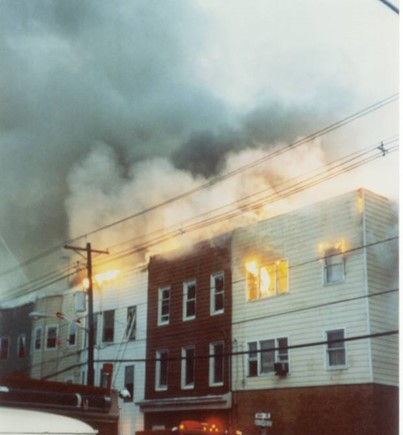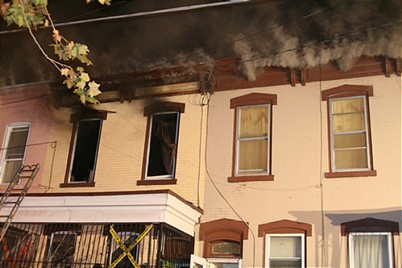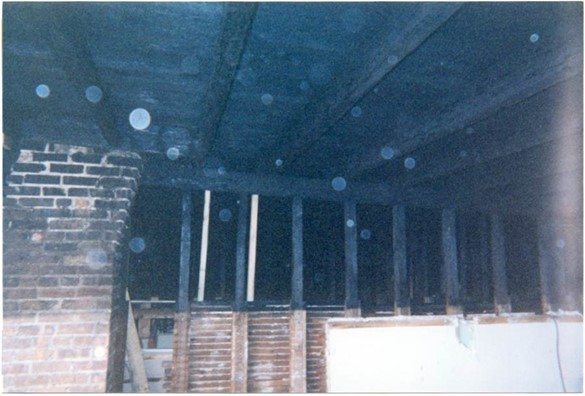Read part one here.
Let’s address attached exposures. These are more of a challenge to protect, but once again, if you forecast where the fire is going, request enough personnel to address your forecasted issues, and decentralize your command to keep your personnel safe and the fireground properly managed, your chances of success will be maximized.
Previously we identified that the three most significant issues when addressing exposures are distance, building construction, and the wind. Obviously in an attached building, distance is zero. This may be complicated by the presence of another cluster of attached buildings in close proximity as in garden apartments or across the street as might be found in older cities with very narrow streets, but the other two issues are indeed considerations that must be a part of the forecasted strategy.

Here we see old wood frame attached structures. The combustible nature of their outer walls as well as their interiors and the shafts between them make them more a lateral threat. Fire can spread right across the combustible siding and spread fire from building to building. Although it does not appear that the fire is spreading via the combustible exterior from this vantage point, this fire did spread via the cockloft as well as via combustible shafts. (Photo by Bob Scollan)
As can be seen in the picture above, the combustible nature of wood frame buildings presents the strategist with the extra challenge of the combustible exterior wall fire, usually in areas that you can’t see. Make sure you check all sides, especially if you have or suspect asphalt siding.

Although brick exteriors will not present the same autoexposure and combustible wall spread threat as wood frame construction, the cockloft is just as combustible as that of a wood frame building. Here it is apparent that there is something nasty is afoot in the cockloft. This roof needs to be vented….quickly and the cockloft void cooled from a protected area. Keep in mind that if you pull the ceilings before opening the roof, you can cause a backdraft to occur. Firefighters have been killed in this manner. (Photo by Steve Skipton)

Cockloft areas can be small lumberyards as this and the next photo shows. This is the center building in a row of attached structures that were gutted by a fire that went undetected for a long period of time. Note the size of the cockloft from the A side. The photo below was taken from the interior of the buildings above. Note the lack of damage below where the ceiling line is. This fire spread unimpeded above the ceiling in the open cockloft that stretched for several buildings. (Photos by AA)

The next factor to consider is the wind direction. The need to protect the exposure will always be more critical on the leeward side. Forecast that and get your resources in there as quickly as possible. This presents a problem when staffing is inadequate. You need people in the fire building and on its roof. You also need people in each exposure. This is where additional help must be summoned upon arrival. It is OK to burn one building. Burning more than one when you had the chance to make a positive impact on the operation by summoning help early and by addressing where the fire is likely to go is unacceptable. If the building is between two structures (the easiest ones to fight are on the corner where the fire can only spread in one direction), you have doubled your need for resources. Remember that the wind can change directions so be prepared for that too.